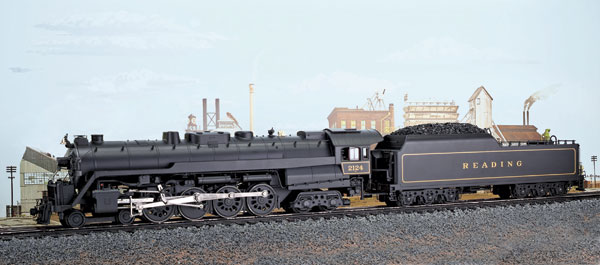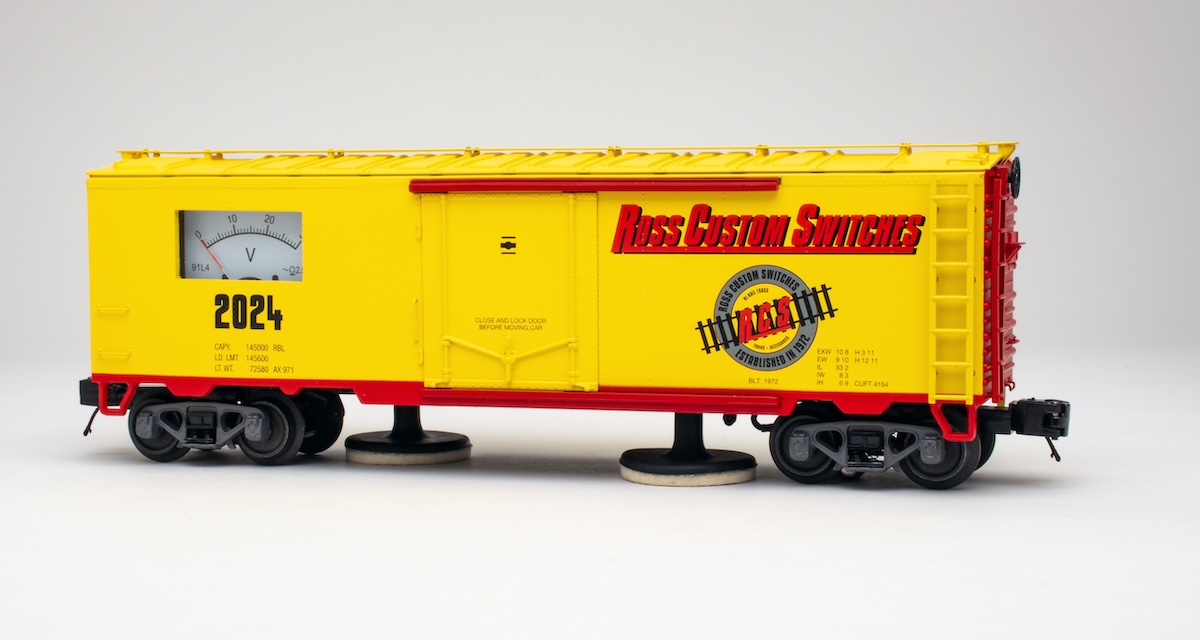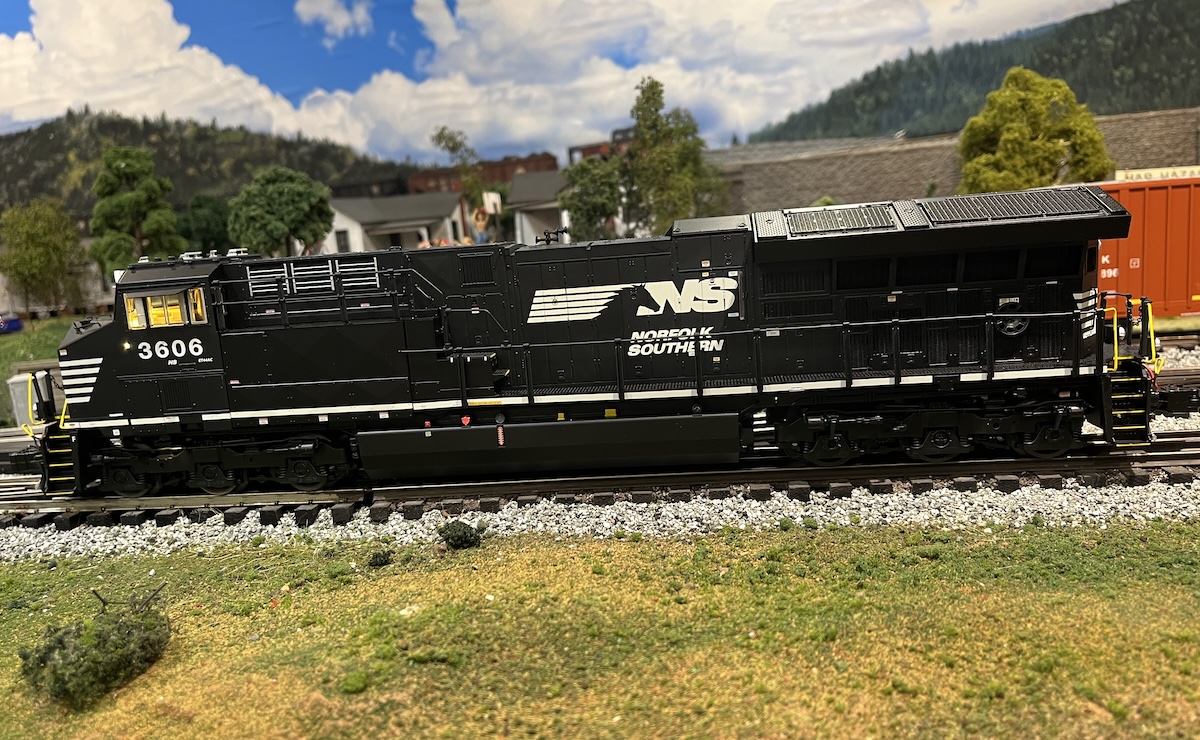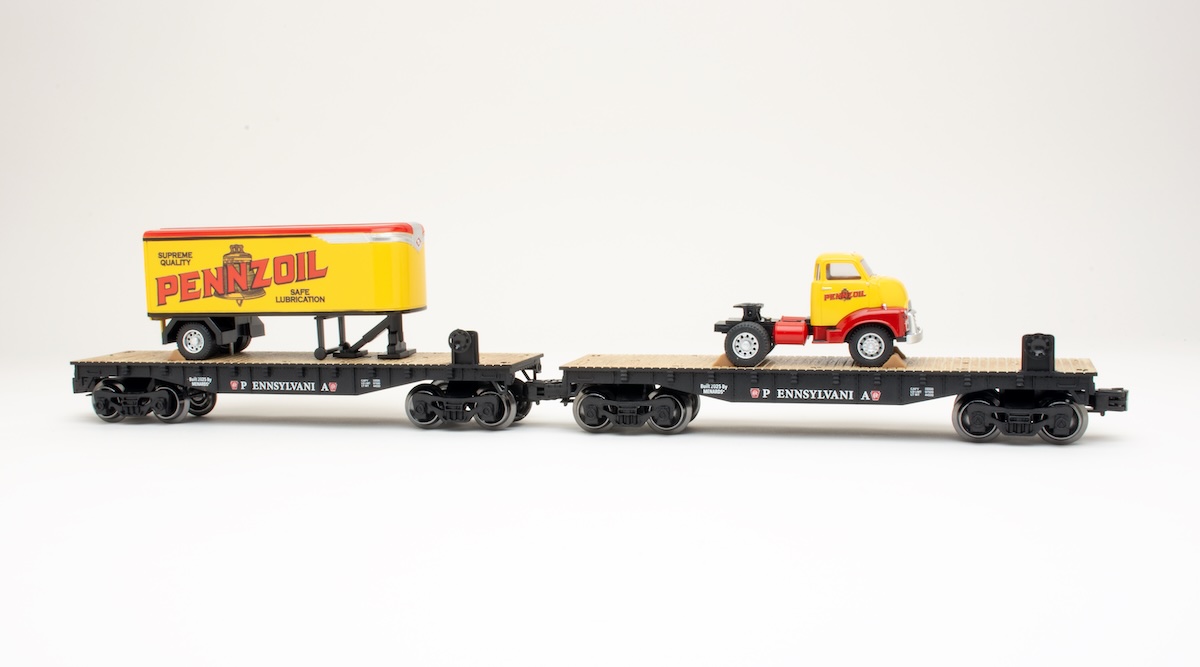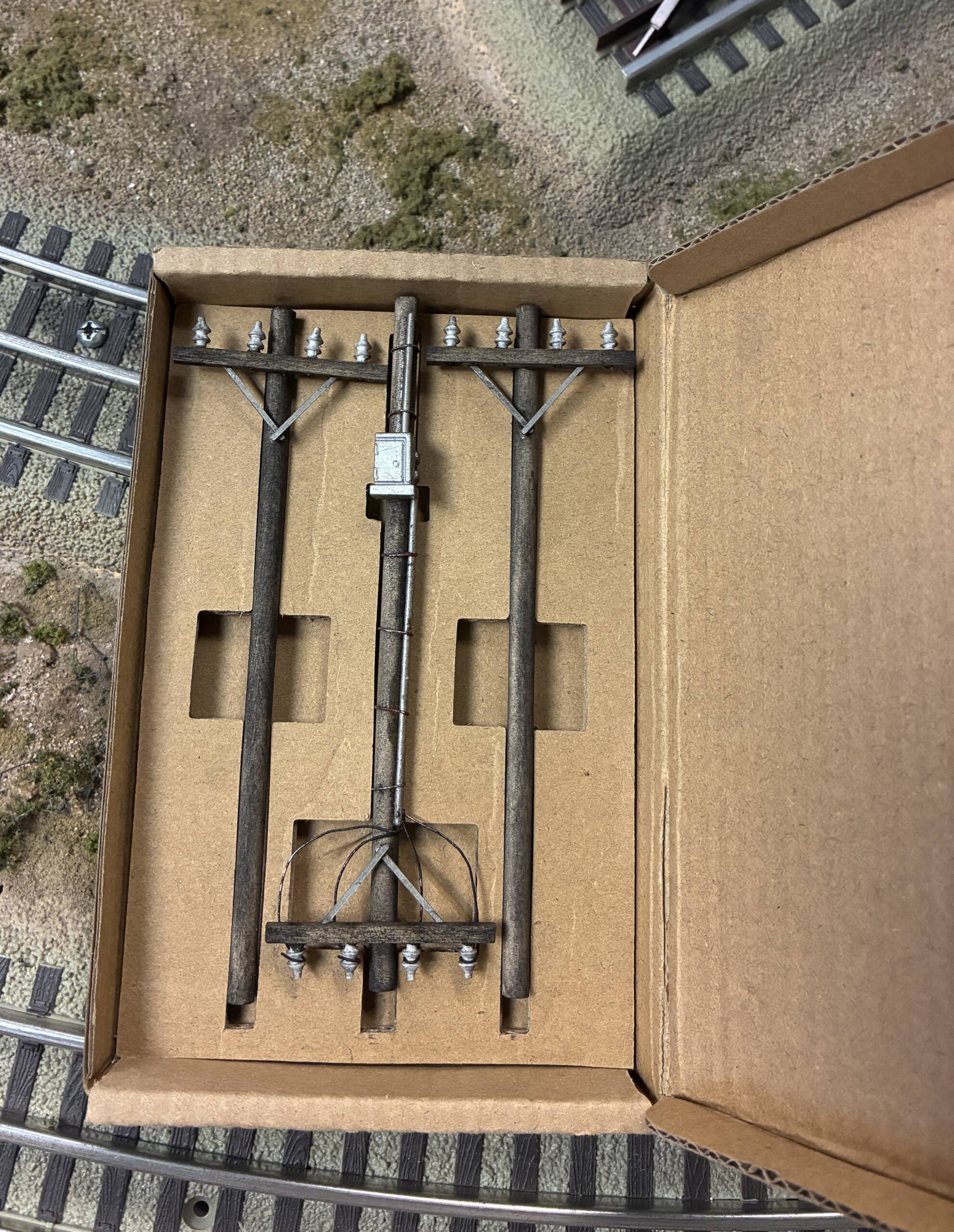I came away convinced that the Reading steamer was one of the finest-looking locomotives to ever grace American rails. After 30-plus years, I stand by that. So when MTH produced an O gauge interpretation of this locomotive, I was very interested!
The Reading T-1 was one of the twilight experiments in steam locomotion that actually worked. In 1944 the Reading had an aging locomotive fleet.
As Bert Pennypacker noted in his article “2124 and her sisters” in the December 1960 Trains magazine, “The need was not for more locomotives – rather it was for more modern and efficient locomotives.”
The plan was to create new 4-8-4 Northern locomotives by extensively rebuilding engines already on the roster. The Reading cannibalized some of its I-10sa-class 2-8-0 heavy Consolidations, saving $2.3 million toward the construction of 30 T–1 locomotives.
The old boilers were lengthened, and a new type of boiler front (known as a “Cyclone front”) was added to reduce cinder cutting. Beneath the boilers were new 60,000-pound, one-piece, cast-steel frames. Baldwin supplied the railroad with most of the new components, such as the 70-inch drive wheels, and the railroad’s shops built the tenders.
It took two months for the first T-1, no. 2100, to roll out of the company shop. When these steamers hit the high iron, they met all expectations. The locomotives hauled symbol freights and were cleared for running at 65 mph. Their boosters helped get heavier trains rolling faster, and the new tenders reduced the number of water stops. The Reading even had the unusual situation of T-1 powered freight trains overtaking passenger trains on a faster schedule!
But the rollover to diesels was inevitable. By 1949, the T-1s were shifted to less glamorous duties. By 1952, they were in standby status, and by 1954 were in storage. In 1956 a few were leased to the Pennsylvania RR, whose crews loved them. By the fall of 1956, though, they were returned, and as Pennypacker noted, the “PRR just about wore them out and the Reading saw no reason to put money into backshop repairs.”
At the time, in one of those fateful events, the management of the Reading resumed a tradition predating World War II – running railroad-sponsored excursions. During the winter of 1959-1960, no. 2124 was thoroughly shopped (nos. 2100 and 2102 were backups) and the locomotive began the first of 50 “Iron Horse Rambles” that ran through October 1964. In the 1970s, the locomotive pulled the American Freedom Train through towns and cities in the eastern half of the country.
The model
MTH’s Premier line T-1 is quite attractive and clearly on par with other premium scale-sized O gauge steam locomotives.
The die-cast metal locomotive has a very business-like pilot, and for me, the “Cyclone” front and twin tanks are the signature features of this steamer. The pilot has flat steps for a brakeman, the barest tip of a prow, a dummy knuckle coupler chained to a simulated uncoupler bar, and draped brake lines.
Catwalks, with safety tread cast-in, run the length of the boiler. Beneath the decks and above the running gear, you’ll find a great collection of pipes, valves, and compressor tanks.
The boiler is a wonderful piece that features cast-in bands, latches, and other details. The casting is as smooth as silk, and we noted no defects or blemishes in the surface of our sample locomotive.
Boiler add-ons include the usual turbines, whistles, and pop-off valves. I discovered an unexpected detail accidentally when I turned the locomotive over. The four caps on the sand dome are removable, and held onto the boiler by scale-sized chains. So feel free to power the T-1 over to the sanding tower in your servicing yard, but just don’t put real sand in the dome, please!
The running gear is a smart-looking rendering of the prototype. The silver of the unpainted rods and drivers is toned down for a more realistic looking effect. By the way, if you’ve seen photos of the excursion locomotives with white-trimmed wheels, those were just duded up for the public. The MTH version has “blackwall tires,” reflecting the locomotive’s real-world operating appearance.
At the locomotive’s rear, I just love the cab. The two crew figures sit in front of a detailed backhead, which features valve handles and gauge faces painted red or white. There is a small bulb for illumination that won’t blind the crew. The firebox door has an add-on lever arm, and, as is pretty much standard these days, the firebox has a red glow to simulate combustion.
The cab has simulated all-weather curtains and opening overhead hatches. You’ll also note that the frames of the movable cab windows have brown trim, while the inside of the window ledge is green.
If there was a locomotive tender “hall of fame,” the first inductee would be the tender that accompanied the real-life T-1! MTH’s version captures the look of this heavy giant, and then some.
The frame of this beast measures 12 inches long (48 feet in O scale), just 2 inches shorter than the locomotive itself. The tender features simulated brake chains tethered to the frame on both ends of each truck sideframe.
You’ll also find chains dangling from both lead corners of the tender, right next to the grab irons.
The rear of the tender has a backup light, simulated uncoupler arm, and steps and grab irons. A low handrail runs along the three low sides of the tender deck. On the top of the tender deck, if you lift the water hatch, you’ll see smoke and volume controls as well as a socket for a ProtoSound 2.0 battery charger (the charger is a separate purchase). The coal load is of the “lots of chunks” variety, opposed to cast-in.
The MTH T-1 is designed for two- or three-rail use. On the bottom of the tender frame are switches that allow you to chose between three-rail and two-rail operation, once you’ve removed or installed the center-rail pickup rollers.
Paint and decoration are as fine as I might have hoped for in a favored locomotive from my youth.
On the test track
Our sample T-1 locomotive ran as good as it looks on everything from Lionel tubular track to Atlas O solid rail track. It negotiated track switches with ease. Surprisingly, MTH states the locomotive can operate on curves as tight as O-42. We tried it, and while the big locomotive did stay on track, the amount of fore-and-aft overhang looks awkward.
The speed range for this mighty locomotive is 1.8 scale mph to 71.5 scale mph. Drawbar pull for the 14-pound 14-ounce locomotive was measured at 4 pounds 9 ounces. That’s enough to pull anything you can throw at it.
All ProtoSound 2.0 functions, such as coil coupler operation, speed control, and sound effects, operated as expected. Motor operation was quiet, and the locomotive promptly responded to commands in all modes. Smoke output was generous and in keeping with other MTH locomotives we have tested.
As previously mentioned, this model is designed to operate on two-rail, DC power or three-rail AC power.
The sound system has a deep, robust tone. The chuffs, clunks, thunks, passenger station announcements, and other sounds are as good as they get.
While there are plenty of $1,000-plus locomotives on the market, this is one of the few that has really caught my eye and has me looking at my bank balance for spare change. The Reading T-1 looks great, runs well, and sounds terrific, which is what big O gauge steam is all about. I can’t think of better praise than that.





